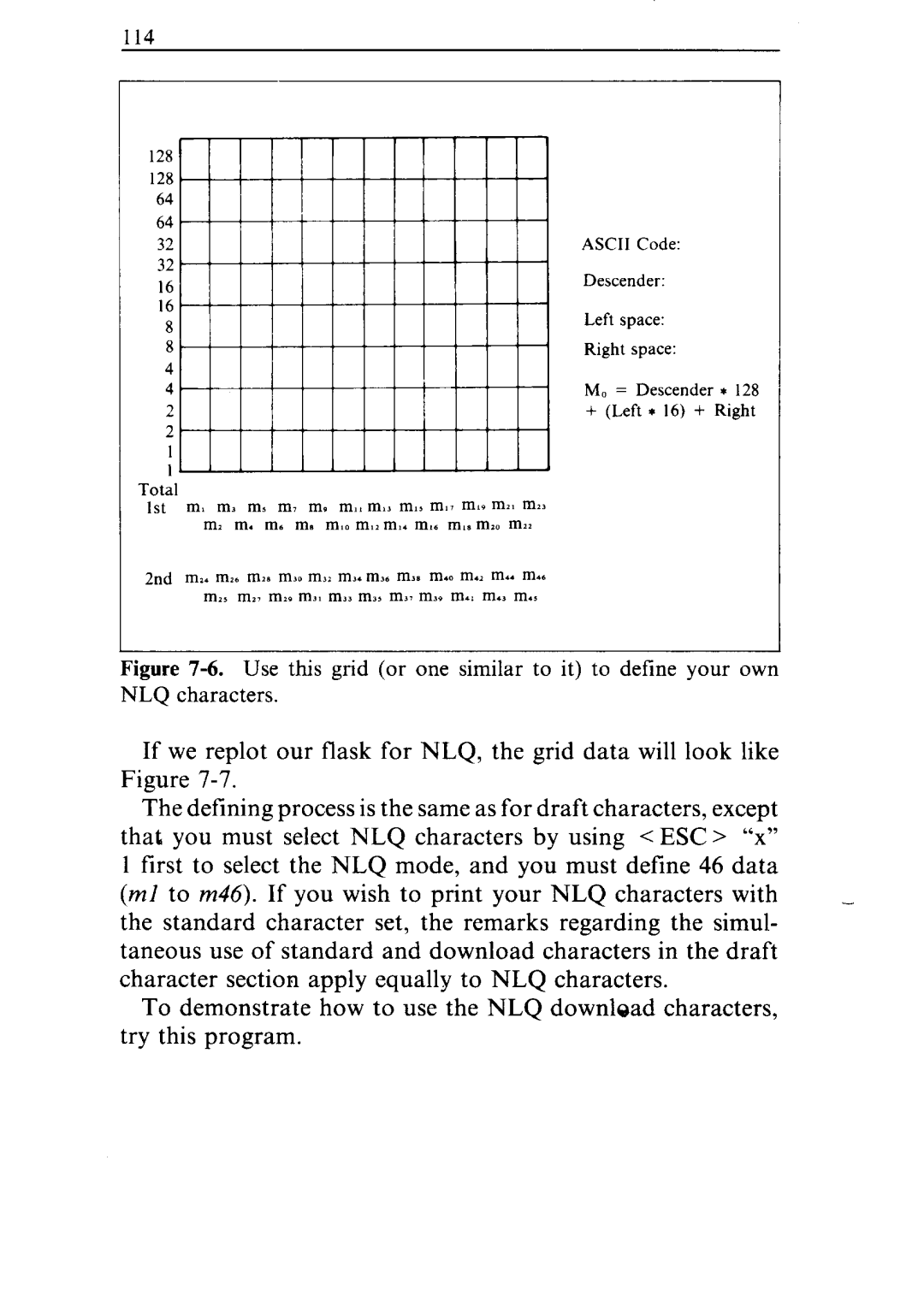
114
128
128
64
64
32
32
16
16
8
8
4
4
2
2 I 1
Total
1st rn, m, m, m, m, m,, m,, m,, ml7 rn,, mJ1 ml3 rn, m. m. m. rn,, m,, m,, m,. mra m,, rnz2
2nd ma. rn>, rnJe ma0 rn,* m,. m,, m,. ma0 mr2 mrr mrs m,, mz7 ma, ma1 m,, m,, ma7 m,, m., m., rn,,
ASCII Code:
Descender:
Left space:
Right space:
M, = Descender * 128 + (Left * 16) + Right
